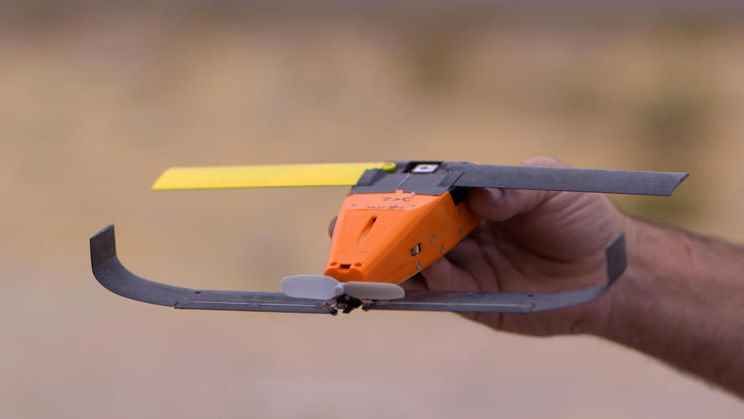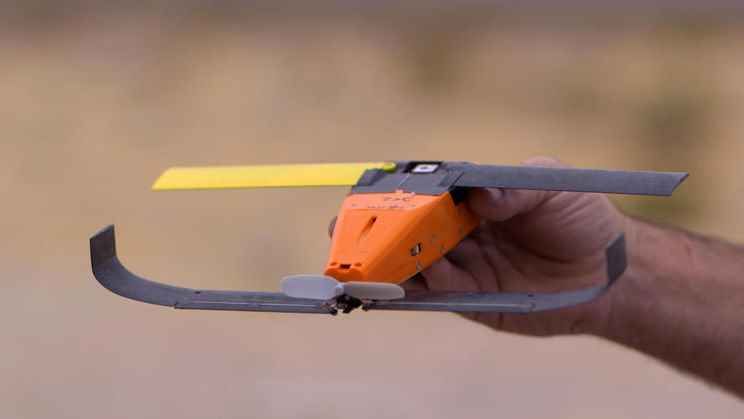The “locust” project. US army tests drone swarm
The Pentagon, as part of its work on a new type of weapon, launched more than a hundred small, autonomous drones over a training ground in California, which then formed a formation and went into offensive action. The project is called “locusts”.
This is what the future may look like on the battlefield. Project „LOCUST” (Low-Cost UAV Swarming Technology) is a wspóThe modern combat version of locusts. The unmanned flying units can operate independently or follow orders from a command center. They are supposed to act on a similar principle as locusts – move in large groups and wreak havoc on enemy ranks.
Military strategists have high hopes for the project „locusts”. Drones are relatively cheap to produce, and hundreds of such machines are capable of overwhelming enemy defenses with their sheer numbers. Developój new systemóin autonomous weapons has been made possible by advances in work on artificial intelligence systems.
Drone swarm testów took place in October last year, but the data from it has been made public only now. A drone was released from an airplane over a training ground in Californiaów 103 drones. Each of them was about 16 centimetersóin length.
– Drones have demonstrated advanced swarming behaviors, such as wspólne decision-making or alignment with formation. Rój acts as a unified organism. Each drone communicates and supportsóhe cooperates with other drones. Rój has no leader and can adapt to any conditionsów. When one drone is eliminated, another takes over its role to complete the mission – William Roper of the Pentagon said.
The idea itself was born in 2012. That’s when U.S. military analysts took a stab at attack scenarios with hundreds of small dronesóin the enemy. Simulations have shown that current U.S. defense systems stand no chance against such locusts. For eight dronesóIn kamikaze attacks on the destroyer, almost half reached their target.
Such small units have a small radar signature, which allows them to remain unnoticed almost until the very moment of attack. It is by then too póO ne of the defenses to use the missileóin rocket. High-speed cannons remain, but with swarm speeds of 250 km/h and very póThe moment the swarm is detected on radar, there is very little time to react.
Perdix
The drones used in the test are called Perdix. It is already shósta generation of such devices created by an engineerów of the US army. During the testóin appeared a CBS television crew to do footage of a new toy of the US military. Operators had difficulty shooting the footage due to the difficulty of capturing the fast-moving dronesów. An additional problem for the operatorów was the unpredictable direction of the flight of the cloud.

Rój droneów under combat conditions can be extremely effective. The idea itself has great potential. A smart rój can send one drone on reconnaissance, while the others can split into groups and perform separate tasks. Current security systems are unable to defend against such a hoard. But not only offensive actions can be assigned to locusts. Such rój can create an effective protective barrier for its own units.
The drones themselves may prove too small to destroy large units, but can effectively deprive the enemy of key systemóin such as propulsion or rocket launchers. Although in the event that, for example. One in ten drones will carry an explosive charge and large units can be neutralized.
There are also plans to build a kind of doran-mat, where individualóindividual drones could replenish armaments or recharge batteries or retrieve fuel.
Poles are also working on a similar weapon
Similar technology is also being developed by Poles. Experts from the Military University of Technology (WAT) are working on a reconnaissance and strike system for the Polish army. The system is supposed to function on the principle of a swarm of insectsów and will, by design, consist of a mother drone, whichóry will transport other drones, droneóIn serving a direct attack and individuals whoóhe aim will be to scout and diagnose.
The system is expected to be ready in 2021 and is expected to cost more than 100 millionóin gold. Technology is to be used primarily for reconnaissance, but also for destroying key enemy infrastructure. Experts from the WAT, together with Asseco Poland and Flytronic, are working on developing the system.
